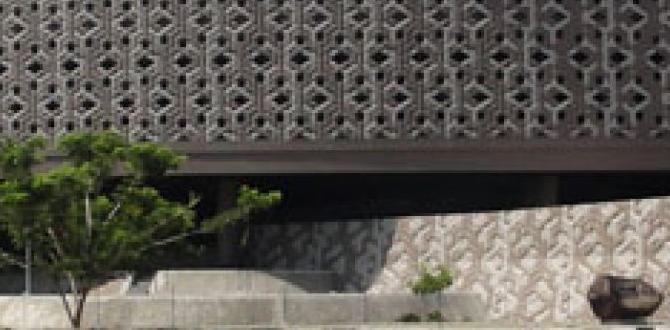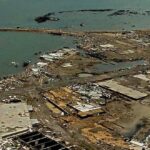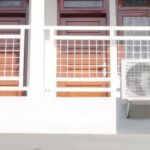: In the city of Banda Aceh, Indonesia, stands the Museum Tsunami Aceh, a poignant testament to the devastating Indian Ocean tsunami that struck on December 26, 2004. This natural disaster, one of the deadliest in history, claimed the lives of more than 230,000 people, predominantly in Aceh province. The museum serves as a memorial to the victims and an educational facility that aims to raise awareness about the impacts of tsunamis, disaster preparedness, and the importance of preserving Aceh’s cultural heritage. Join me on a journey to explore the history, exhibits, educational programs, and future developments of the Museum Tsunami Aceh.
History of the Museum Tsunami Aceh
The Museum Tsunami Aceh was established in 2009, five years after the catastrophic tsunami that devastated Banda Aceh. It was designed by an international team of architects and built on a site that was once a neighborhood obliterated by the tsunami. The museum stands as a symbol of hope, resilience, and remembrance of the lives lost. Its architecture incorporates elements of Aceh culture, blending traditional and modern design to create a unique and meaningful space.
Purpose and Objectives of the Museum Tsunami Aceh
The primary purpose of the Museum Tsunami Aceh is to honor the victims of the 2004 tsunami and preserve their memories. It serves as a place for healing, reflection, and education, striving to prevent future disasters. The museum’s objectives include:
- Raising awareness about the impacts of tsunamis and the importance of disaster preparedness
- Promoting empathy and understanding among visitors
- Preserving and showcasing the cultural heritage of Aceh
- Providing support and resources for survivors and their families
Exhibits and Collections at the Museum Tsunami Aceh
The museum houses a diverse range of exhibits and collections that aim to convey the scale and impact of the tsunami. Highlights include:
- An immersive multimedia exhibition that recreates the sights, sounds, and emotions experienced during the tsunami
- Panoramic photographs capturing the extent of the destruction and the subsequent rebuilding efforts
- Personal stories and artifacts donated by survivors and families of the victims, offering a glimpse into their lives before and after the disaster
- A collection of art and sculptures by local and international artists, expressing themes of resilience and hope
Impact of the Tsunami on Banda Aceh
The tsunami of 2004 had a profound and lasting impact on the city of Banda Aceh. The region experienced widespread destruction, with homes, buildings, and infrastructure reduced to rubble. The loss of lives was devastating, leaving families shattered and communities mourning. However, the disaster also brought about a sense of unity and resilience among the survivors, who came together to rebuild their city and their lives.
Importance of the Museum Tsunami Aceh in Honoring the Victims
The Museum Tsunami Aceh serves as a significant memorial to the victims of the disaster. It provides a space for remembrance, healing, and honoring those who lost their lives. By preserving their memories and sharing their stories, the museum ensures that the human impact of the tsunami is not forgotten. It also serves as a reminder of the importance of disaster preparedness and the need to work towards a safer future for Aceh and other vulnerable regions.
Educational Programs and Initiatives at the Museum Tsunami Aceh
The museum offers a range of educational programs and initiatives aimed at creating awareness and understanding about tsunamis and disaster preparedness. These include:
- Workshops, seminars, and lectures conducted by experts in the field
- Guided tours that provide in-depth information about the exhibits and their significance
- Interactive exhibits and activities designed for children and families
- Collaboration with local schools to incorporate tsunami education into the curriculum
Future Developments and Expansion Plans for the Museum Tsunami Aceh
The Museum Tsunami Aceh has plans for future developments and expansion to enhance its offerings and reach a wider audience. Some of the proposed plans include:
- Digitizing the museum’s collections to make them accessible to a global audience
- Creating outdoor spaces for reflection and contemplation
- Collaborating with international institutions for research and knowledge exchange
- Expanding the educational programs to reach more schools and communities
Conclusion
The Museum Tsunami Aceh stands as a poignant reminder of the tragic events that unfolded in Banda Aceh in 2004. Through its exhibits, collections, and educational programs, the museum serves to honor the victims, raise awareness about tsunamis, and promote disaster preparedness. It is not just a place of remembrance but also a symbol of hope and resilience, inspiring visitors to work towards a safer future. As the museum continues to evolve and expand, its impact will extend beyond the local community, ensuring that the lessons learned from the tsunami are not forgotten.
FAQs
Q: How long did it take to build the Museum Tsunami Aceh?
A: The museum was established in 2009, five years after the 2004 tsunami, and took several years to plan and construct.
Q: Can visitors donate artifacts to the museum?
A: Yes, the museum welcomes donations of artifacts and personal stories related to the tsunami. These contributions help preserve the memories of the victims and their experiences.
Q: Is the Museum Tsunami Aceh only focused on the 2004 tsunami?
A: While the primary focus of the museum is the 2004 tsunami, it also aims to raise awareness about the broader topic of tsunamis and the importance of disaster preparedness in the region.
Q: Are there guided tours available at the museum?
A: Yes, the museum offers guided tours conducted by knowledgeable staff who provide in-depth information about the exhibits and their historical significance.
Q: How can schools and communities get involved with the museum’s educational programs?
A: Schools and communities can reach out to the museum to inquire about educational programs and initiatives. The museum actively collaborates with local institutions to promote tsunami education.



